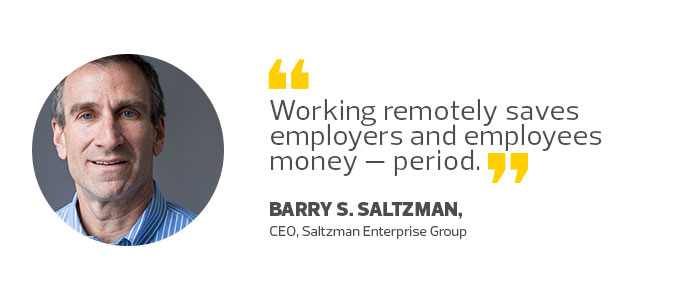Technology Can Make Remote Offices More Efficient — Here’s Why
Technology is slowly changing how we conduct business. If you think about your own workplace, how many of your employees work remotely or live on the other side of the world? Office applications and cloud services have quite literally put our entire office in the palm of our hands, with so many aspects of business available directly on our smartphones.
But not everyone is thrilled about the concept of working remotely. Several years ago, Yahoo informed its employees that they would no longer be able to work from home, in an attempt to unify the company and increase productivity. The move, naturally, angered many employees, particularly ones who took the job because there was the option of working where they like. This raises the question: Should employers push for employees to work from home?
The answer is, it depends. The technology is available to make remote workplaces extremely productive and efficient, but it begins by focusing on the process instead of the tech. If you do decide to incorporate work-from-home days at your business, it’s important you choose the tools that will help you focus on communication, simplified workflows and camaraderie.
As more and more employers choose to let their employees dictate where to work, technology will play a crucial element in ensuring an efficient workplace.
Here are three reasons to go with the flow:
Remote Workers Can Be More Productive
Allowing your employees to work from home or remotely can increase your office productivity and efficiency. Consider this: An employee who would normally spend an hour every morning commuting to work could instead use that hour to work on a project for a client at home. Additionally, instead of driving to a client meeting, you could propose to host a screenshare or conference call so your employees don’t have to take time out of their day to drive to the meeting site.
Take advantage of the video conferencing tools to create an efficient communications system. The more face time you can have with your employees, the easier it will be to relay assignments and provide immediate feedback.

Video conferencing is the next best thing to face-to-face meetings; set up regular meetings and conference calls to keep your employees up to date. Less urgent messages can be sent via e-mail or through collaboration platforms. The key is to provide multiple methods of communicating to your team and let them choose which methods work best for them.
Remote Offices Can Help Cut Costs
Working remotely saves employers and employees money — period. Not only will you save on transportation costs, but with the majority of your employees working remotely, you as an employer don’t need to spend money on a large office space.
A 2013 survey by the Telework Research Network found that remote offices saved employees nearly $10,000 a year and between $1,600 and $6,800 in transportation costs.
Remote staffs eliminate the need for large company spaces, which come with a hefty price tag given how expensive real estate across the world has become. Reduced overhead is a huge bonus for employers looking to save money anywhere they can. By encouraging employees to work from home, companies can reduce their spending on rent, utilities, office equipment and even furniture.
Remote Work Options Boost Retention
Employees want benefits along with their paychecks, but an even greater benefit than company-sponsored happy hour may be the opportunity to work from home. Employees who work from home reportedly have lower stress levels and are more loyal to their companies. Nearly 80 percent of those surveyed by Staples Advantage mentioned having a better work-life balance by being allowed to work from home.
The desire to work from home is so strong, 36 percent of employees surveyed by Global Workplace Analytics would rather have the option of working from home than a pay raise. Not only does technology make it easier for employees to stay connected to one another while working remotely, it lets many employees pursue a healthier work-life balance. The last thing employers want to deal with is employee turnover; most would much rather provide the option of working from home if it means reducing attrition.
Technology makes it easier for IT teams to manage workers on the go and to let employees conduct virtual meetings with other team members anywhere around the world. But it’s equally important to recognize that many technologies can lead to potential distractions that negatively impact productivity. We have the ability to create efficient workplaces without ever leaving our homes.
Read more columns by Barry S. Saltzman here.









